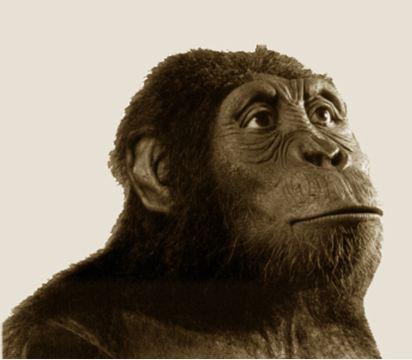Universidad de Barcelona
Source - http://www.ub.edu/web/ub/ca/
The diet of Australopithecus anamensis, a hominid that lived in the east of the African continent more than 4 million years ago, was very specialized and, according to a scientific study whose principal author is Ferran Estebaranz, from the Department of Animal Biology at the University of Barcelona, it included foods typical of open environments (seeds, sedges, grasses, etc.), as well as fruits and tubers. The work, published in the Journal of Anthropological Sciences, is directed by lecturer Alejandro Pérez Pérez, from the Anthropology Unit of the Department of Animal Biology at the UB, and its co-authors are professor Daniel Turbón and experts Jordi Galbany and Laura M. Martínez.


Australipithecus anamensis is a fossil hominid species described in 1995 by a team led by the researcher Meave Leakey and it is considered to be the direct ancestor of Australopithecus afarensis, known as Lucy, which lived in the same region half a million years later. The paleoecological reconstructions of the sites with Australipithecus anamensis fossil remains are quite similar to those of Australipithecus afarensis, and suggest a scene with different habitats, from open forests to thick plant formations, with herbaceous strata and gallery forests.
Traditionally, the reconstruction of the diet of Australipithecus anamensis was carried out by means of indirect evidence (specifically, studies of microstructure and enamel thickness, and the dental size and morphology). In this new study, the team of the UB analyzes the pattern of microstriation of the post-canine dentition, from microscopic traces that some structural components of plants (phytoliths) and other external elements (sand, dust, etc.) leave in the dental enamel during the chewing of food. It is, therefore, a direct analysis of the result of the interaction of the diet with the teeth.
A cercopithecoid model for the study of the diet
The work published in the Journal of Anthropological Sciences studies the microstriation pattern of all the specimens of Australipithecus anamensis recovered up to the year 2003, of which only five are in a good state of preservation.
|

|
|
SEM images of buccal microstriation pattern of specimens studied: Au. anamensis (a-e) and Au. afarensis (f) [Credit: Universidad de Barcelona]
|
According to the study of the microstriation pattern, the diet of Anthropological anamensis was similar to other present day species of cercopithecoid primates, such as Papio genus(baboons) and Chlorocebus (green monkey), which live in shrubby savannah areas with a marked seasonal influence.
|

|
|
Graphical representation of the analysis of the groups studied that shows the differences between striation patterns of Au. anamensis and Au. afarensis [Credit: Universidad de Barcelona]
|
The work arrived at the conclusion that the diet of Australipithecus anamensis was quite abrasive and rich in seeds, leaves and corms, as it is with the baboons of today. This fossil hominid must also have fed on fruit, but in smaller proportions than Australipithecus afarensis.
What did Australopithecus afarensis eat?
The results of the study on the palaeodiet of Australipithecus anamensis match the characteristics of dental morphology and increased robustness of the dentition and the masticatory apparatus compared with its ancestor, Ardipithecus ramidus. The new questions now focus on the diet of Australipithecus afarensis, direct descendent of Australipithecus anamensis, which has a frugivorous and much softer diet, like present day chimpanzees and gorillas in Cameroon.
As explained by the researcher Ferran Estebaranz,“the microstriation pattern of Australipithecus anamensis and Australipithecus afarensis is clearly different. This could indicate that the former consumed much harder foodstuffs, whereas the latter had a basically frugivorous diet, of a seasonal character, more similar to the direct ancestor of the two species, Ardipithecus ramidus”.